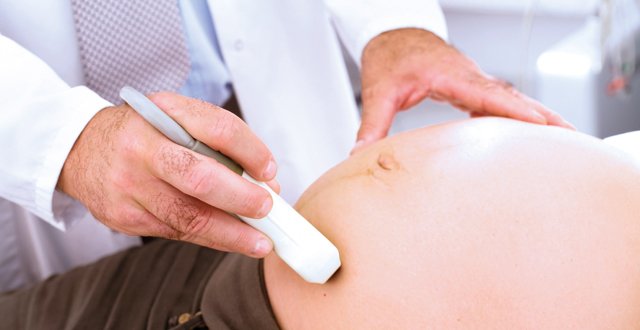A Valproate Response Project Plan has been initiated through the HSE’s Office of the Chief Clinical Officer. According to a draft document released to the <strong><em>Medical Independent</em></strong> (<strong><em>MI</em></strong>) following a Freedom of Information request, the intended life cycle of the project is a six-month period that commenced in June and will run to 30 November.
Babies born to women who take valproate-containing medicines during pregnancy have a 30-to-40 per cent risk of developmental disability and a 10 per cent risk of birth defects. In Ireland, sodium valproate (Epilim) is licensed for epilepsy and bipolar disorder. The risks have been well-described in medicine for many years.
In February, the European Medicines Agency’s (EMA) Pharmacovigilance Risk Assessment Committee (PRAC) concluded that women were “still not always receiving the right information [on sodium valproate risks] in a timely manner” following previous measures announced in 2014. New actions, including a pregnancy prevention programme, have been issued.
As previously reported by <strong><em>MI</em></strong>, a HSE clinical advisor warned a senior national manager and colleagues in October 2017 that the Executive knew the names and addresses of 1,700 women of childbearing age prescribed the drug and that it must consider its “duty of care” by potentially writing to them directly. However, while a direct communication is being planned by the HSE, it has not happened to date.
In effect, the Valproate Response Project Plan is the HSE’s response to the EMA measures. The project steering team includes a patient representative from the Foetal Anti-Convulsant Syndrome (FACS) Forum.
The specific objectives of the project include ensuring that women of child-bearing age who continue or commence Epilim/sodium valproate and other anticonvulsant medications are monitored and subject to an annual specialist review; supporting the implementation of a pregnancy prevention programme; ensuring people impacted by current or historic risks of Epilim exposure in the womb are provided with “immediate information and support”; quantifying the number of impacted children/adults; exploring the requirements of affected children and adults; and developing a diagnostic pathway and establishing a “Task Force on Women’s Health on all anti-convulsant medications”.
<h3 class=”subheadMIstyles”>Diagnostics</h3>
A cost estimate of just over €2 million is cited in the draft document, which refers to access to a diagnostic pathway as a key priority of the project work stream. The document notes that access to diagnostics has a two-to-three year waiting time and that the “current general waiting list is 1,700 patients”. Under a section on dependencies and risk, the document also states: “Contingency plans developed but our capacity and capability to respond remains a risk” and “development of services is based on funding and recruitment of skilled resources”.
A HSE spokesperson told <strong><em>MI</em></strong> that implementation of the project plan has commenced. Around €2 million would be needed to undertake the proposed actions but recurring annual funding will be less than this sum, according to the Executive. “The Patient Support Liaison Service has been initiated and the development of a diagnostic pathway and a women’s health programme is underway,” they added.
A Valproate Response Team prepared communications for prescribers and patients based on new guidance being developed by the Health Products Regulatory Authority (HPRA). A pre-alert letter to all prescribers has already been issued and three post-alert communications were “now in train”, said the HSE’s spokesperson. These communications are a generic post-alert letter to prescribers, advising that the HPRA has issued new guidance which has now been sent; a patient-specific, post-alert letter to prescribers, asking them to contact named patients which has now been sent; and a “follow-up letter” to each patient, noting they are on valproate and if they have not yet been contacted by their GP, that they should make an appointment. This letter will be sent in the coming weeks, according to the HSE’s spokesperson, who added that issuing of the above communications was punctuated by timelines related to publication of the updated HPRA guidance.
“The priority for this communication is to ensure that patients taking this medicine would be reminded of the risk of taking this medicine while pregnant, but at the same time, have the opportunity to discuss the new programme with their doctor or prescriber and receive any support required in terms of information on contraception.
“It was agreed that supports needed to be put in place for all patients who receive a letter and have concerns. This could include patients with epilepsy, patients with mental health disorders, as well as people who feel they may have been affected by valproate.
“Patient representatives have advised that people with such concerns will want to talk to knowledgeable individuals and have asked that the HSE work to ensure that people receiving this information are supported as best they can be.
“A patient support team has been established, staffed by Advanced Nurse Practitioners/Clinical Nurse Specialists in epilepsy and by non-clinical call-takers, who are available on a freephone number which is now in operation, from Monday to Sunday, 10am to 6pm.
“This team is currently contacting callers, providing informed advice, and ensuring that patients are directed to appropriate services. These services are likely to include referral for diagnosis, referral to speak to existing specialist team, referral to contact GP/prescriber, referral to HSE funded counselling supports, etc.”
<h3 class=”subheadMIstyles”>Pharmacy materials</h3>
A spokesperson for the HPRA said it approved an updated suite of educational materials and risk minimisation materials for valproate-containing medicines on 18 May and these materials were published electronically and accessible on its website from 19 May. The educational materials are comprised of a revised healthcare professional guide, patient card and patient guide, annual risk acknowledgment form, pharmacy warning sticker, pharmacy dispensary poster, and shelf-barker.
“Hard copies of these materials were distributed by Sanofi to the aforementioned healthcare professionals and distribution was completed on 6 June. Of note, the brand name ‘Epilim’ has been included on these materials, which was a priority issue for patient organisations nationally. The patient card will be attached to the outer packaging of all Epilim preparations and will reach the Irish market by Q4, 2018. In the interim period, copies of the patient card have been provided to all community pharmacists to facilitate provision of the card and patient counselling with each dispensing of a valproate-containing medicine.
“Following a request from the HPRA, Sanofi submitted an application to the HPRA to include a warning on the outer carton of Epilim preparations in the form of a visual symbol and boxed warning and to include a visual warning symbol on the tablet blisters. These applications were approved by the HPRA in May 2018.”
The Authority’s spokesperson added that, in order to remind healthcare professionals about the risks of valproate-containing medicines and to reinforce the implementation of the risk minimisation measures, it requested that Sanofi collaborate with GP software providers to investigate the possibility of including pop-up alerts when prescribing valproate-containing medicines. In June, Sanofi confirmed that it had obtained a commitment from the three software providers in Ireland to implement pop-up alerts with go-live dates in early July.
“The updated product information (Summary of Product Characteristics (SmPC) and Package Leaflet (PL)) for valproate-containing medicines, adopted on foot of the referral, were approved by the HPRA in July 2018 and are available on the HPRA website.
“Following extensive feedback from healthcare professionals, patients and patient organisations on the need to reduce the pack size in order to ensure that all patients receive a package leaflet and the outer carton with the visual reminder (text and symbol) at each dispensing, the HPRA requested Sanofi to introduce a reduced pack size of 30 for their Epilim preparations to the Irish market. Sanofi committed to introducing this reduced pack size, with a proposed timeline of Q4 2018. The HPRA approved an application for this reduced pack size in August 2018.”
The HPRA and RCSI have been granted funding by the Health Research Board (HRB) to conduct research into the effectiveness of risk minimisation methods. Preliminary work has been undertaken over the summer, with the research due to start in September.
Meanwhile, the FACS Forum has said the delay in issuing the direct communication letter to patients, who number around 3,000 in the eight-to-55 age range, is “putting women on valproate and their children at further and unnecessary risk”.
Ms Karen Keely, Chair of OACS Ireland, further informed <strong><em>MI</em></strong>: “Members of OACS Ireland have been working with the HSE to develop and implement a valproate action plan. The HSE has, we understand, identified the necessary funding to make the plan happen. OACS Ireland urges the HSE to move swiftly on implementation of the plan so that no more families have to suffer the potentially devastating effects of taking Epilim during pregnancy.”
Campaigners are calling for an investigation into prescription of valproate and compensation for those affected.













Leave a Reply
You must be logged in to post a comment.